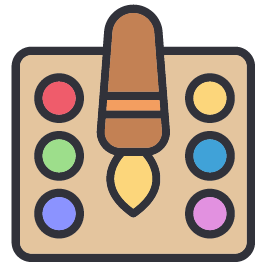Starting your journey into caricature art can feel both exciting and overwhelming. The good news? You don’t need to be a master draftsman to create fun, expressive caricatures. All you need is the right approach and practice!
Step 1: Observe and Sketch Quickly
The key to caricature is capturing the essence, not every tiny detail. Begin by looking closely at your subject — their unique facial shapes, expressions, and gestures. Then, try quick sketches focusing on:
- Big shapes (head, jawline, eyes)
- Characteristic features (nose size, eyebrow shape, smile)
- Overall proportions
Quick, loose sketches help your hand and eye connect, making your drawings more spontaneous and lively.
Step 2: Practice Exaggeration Gradually
Once you can capture a likeness, start experimenting with exaggeration. Pick one or two features to enlarge or shrink — such as big eyes, a wide mouth, or a pointy chin.
Try this exercise:
- Draw the face as realistically as possible.
- Then, draw the same face exaggerating one feature dramatically.
- Finally, combine these two approaches for a balanced caricature.
This practice builds your confidence and helps you understand how far you can push features while keeping the subject recognizable.
Step 3: Use Lines to Express Personality
Caricature is as much about how you draw as what you draw. The line quality — whether it’s bold, sketchy, soft, or sharp — can convey different moods and energy.
Think about:
- Using thick lines for strong, bold characters.
- Light, sketchy lines for gentle, whimsical portraits.
- Curved lines to add friendliness and flow.
- Angular lines to suggest tension or intensity.
Playing with line styles adds depth and emotion to your caricatures beyond the shapes.
Step 4: Add Story Elements
As you grow, start integrating props, backgrounds, or symbols that tell more about your subject. This turns your caricature from just a face into a mini story or message.
For example, you might add:
- A giant coffee cup for a caffeine lover.
- A paintbrush and palette for an artist.
- A microphone for a singer or speaker.
These elements make your work more engaging and personalized.
Final Thoughts
Starting caricature drawing is about curiosity, fun, and observation. Don’t worry about perfection — embrace mistakes as part of learning. Keep sketching regularly, and soon you’ll find your unique style blossoming.
Remember, every great caricaturist started just where you are now: with a pencil and a curious eye.
